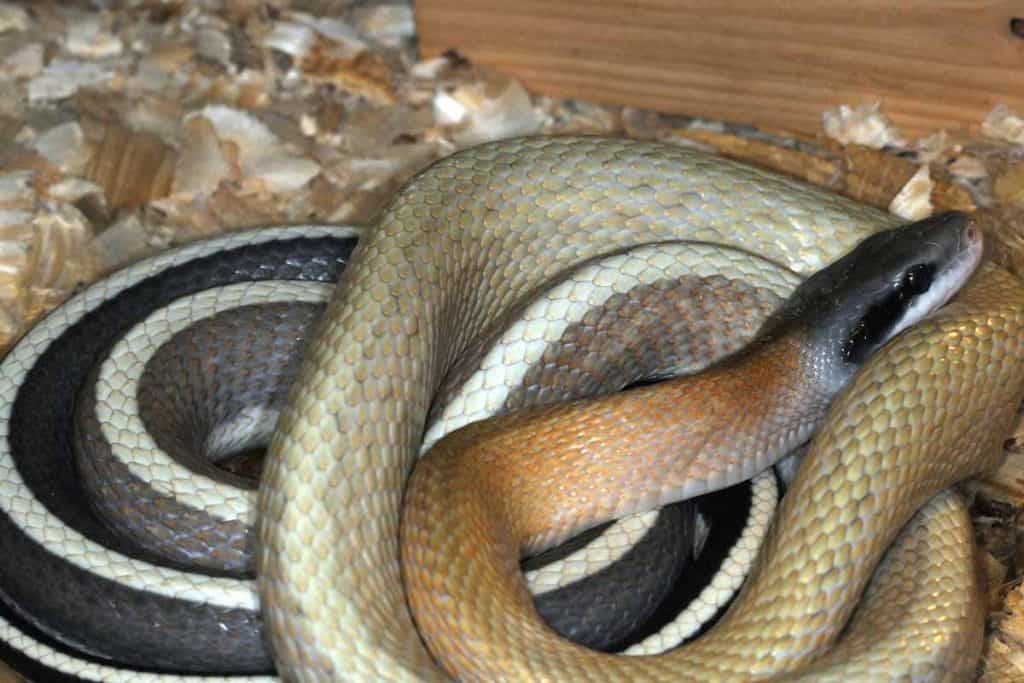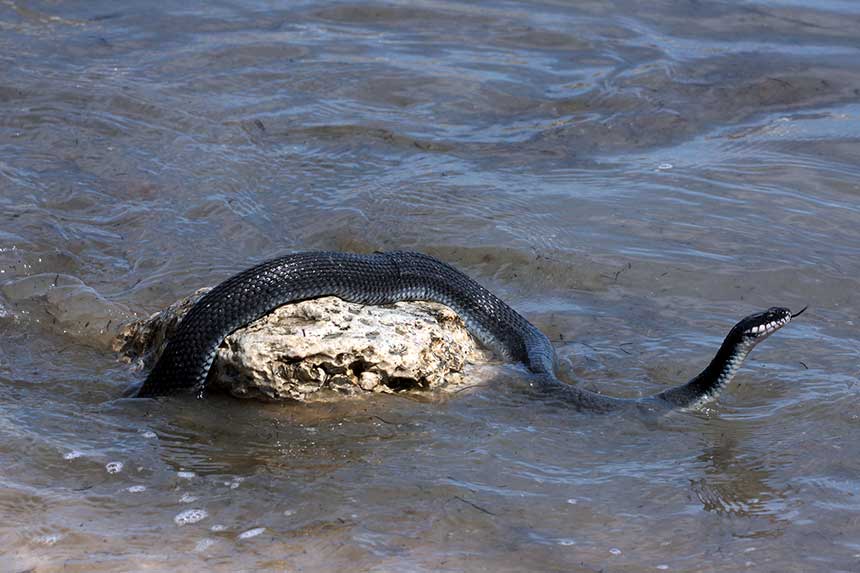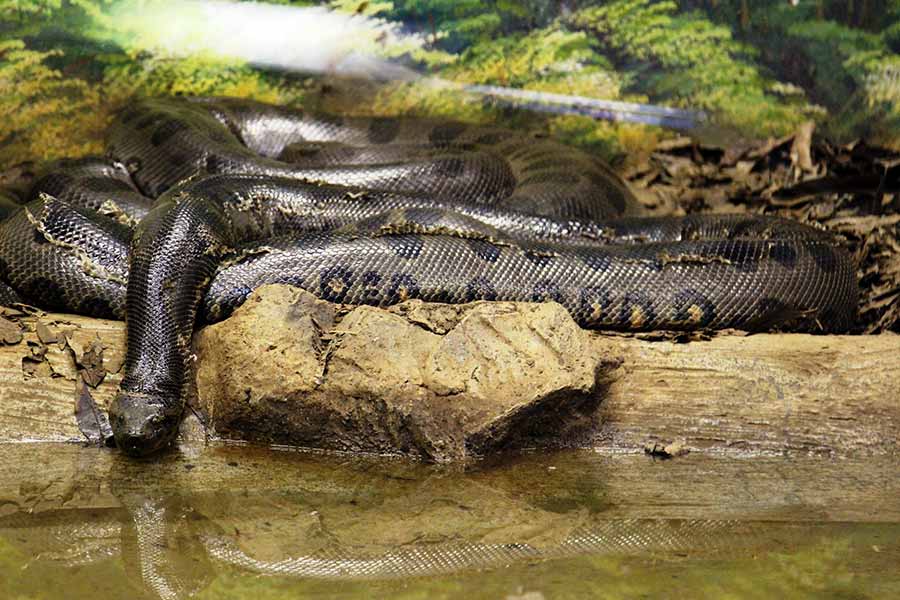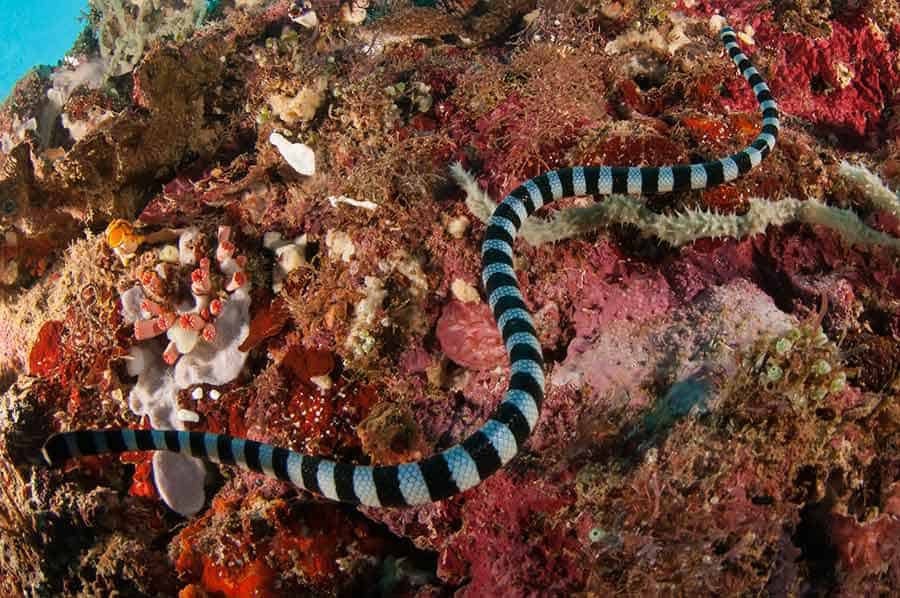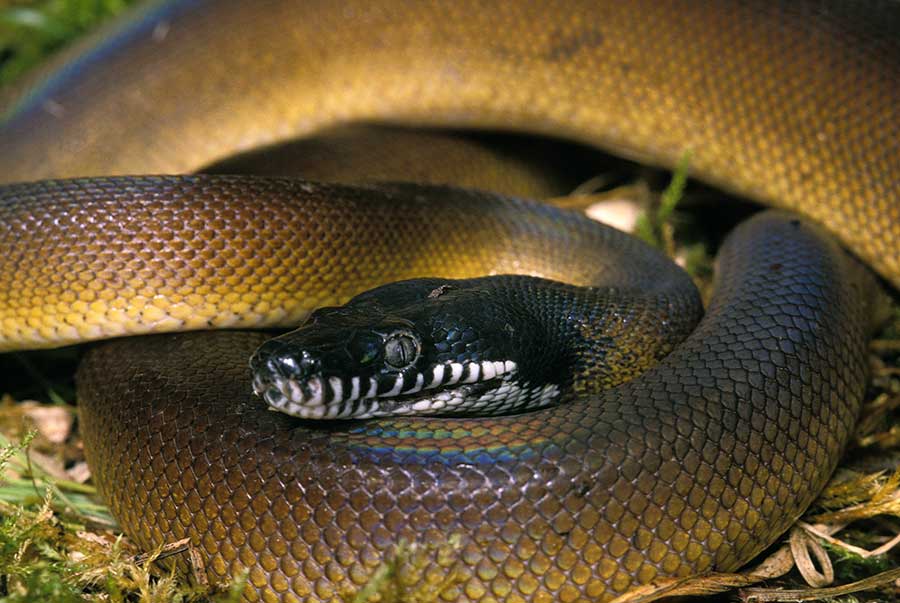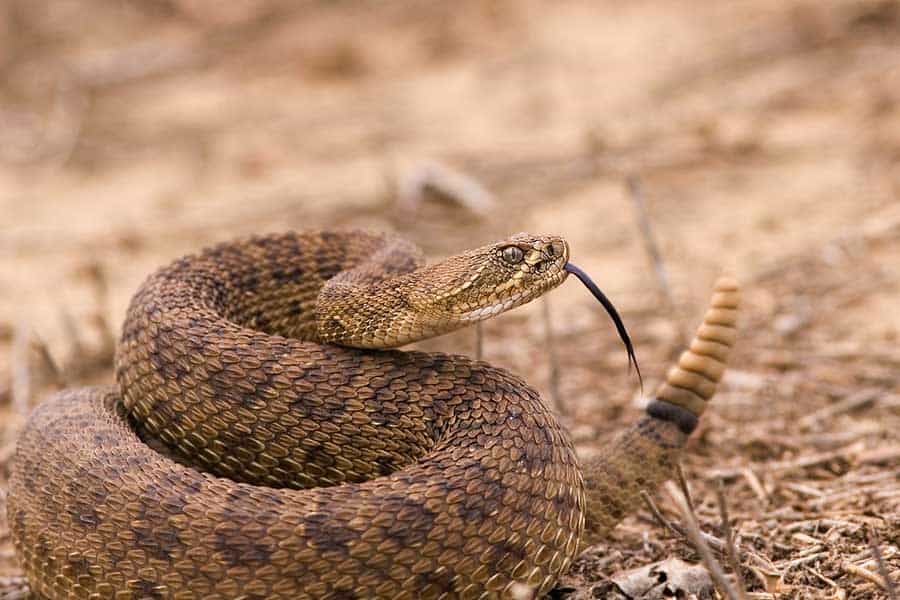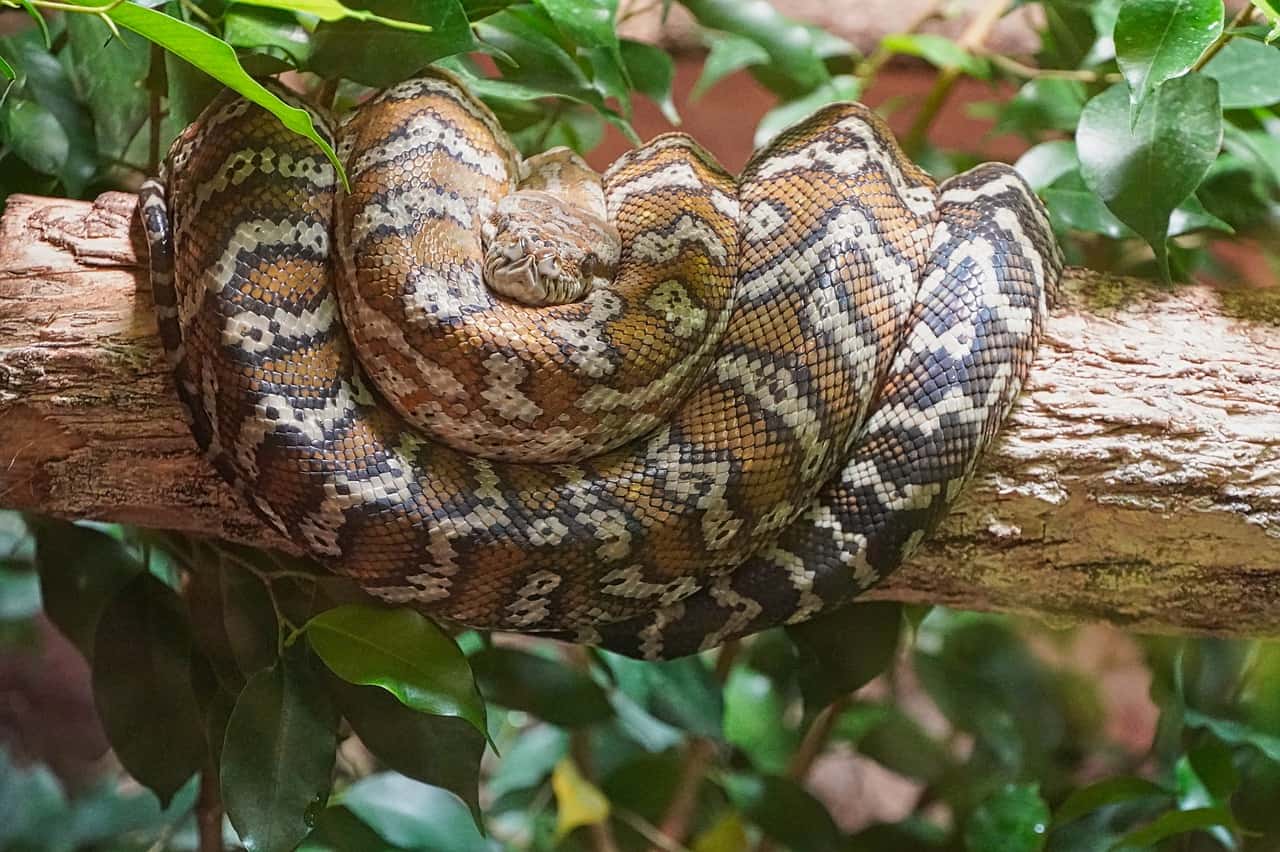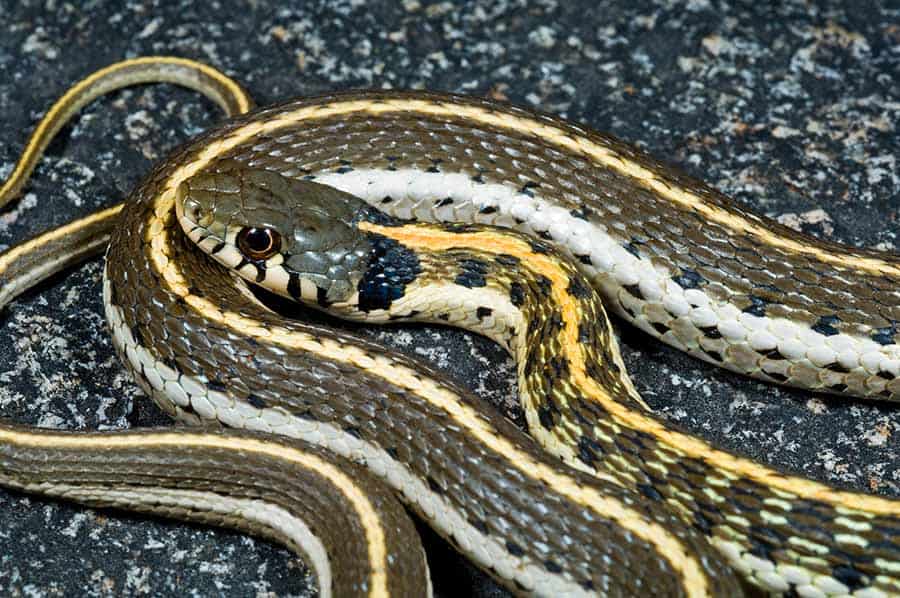Snakes are fascinating creatures because they have three different methods for reproducing! Some snakes lay eggs, some snakes appear to give live birth, and some snakes actually do give live birth. Now you may be wondering, “What snakes give live birth? Don’t reptiles only lay eggs?”
There are a few groups of snakes that give true live birth, such as the anacondas, water snakes, and the boas. There are also other species of snakes that differ from their family and give live birth, such as garter snakes.
In this article, you will learn about the three ways that snakes can give birth. We’ll also go over some species of snakes that actually give live birth! Some of these snakes make very good pets, while some of them are best left to the absolute experts or the wild.
Read on to see if your pet snake makes it onto the list of live bearers!
Snakes’ Different Methods for Giving Birth
Snakes are incredibly unique in the animal kingdom. They can give birth in three different ways, depending on the species. Each method of snake reproduction is specific to the environment the species lives in.
1. Oviparous
Oviparous snakes are the ones we are the most familiar with. These are the snakes that lay eggs. Most snake species are oviparous. Ball pythons, king snakes, and corn snakes are all oviparous snakes.
The eggs will form inside the mother snake’s body. When they are ready to be laid, she will lay them in a nice, humid nest that is safe from the edge of the water, drying out, predators, and rain.
The mother snake will then coil around the eggs and protect them fiercely. She will shiver her coils around the eggs to create heat to keep them at the correct temperature. Eventually, these eggs will hatch into more baby snakes.
Some snakes, such as pythons and pit vipers, have been shown to care for their baby snakes by protecting them for the first couple of weeks of life.
Check out our guide to find out what snake eggs look like!
2. Viviparous
A select group of snakes are viviparous. This means they give birth to live young with no eggs involved. These snakes carry their babies inside their bodies for the entirety of the ‘pregnancy’ and then give birth to live baby snakes.
These baby snakes are fed on a yolk sac or a placenta while they are in their mother’s body.
Once the babies are ready to be born, the mother will push them out!
All members of the viper species are live bearers except for the bushmasters.
Note: No, snakes are not mammals (even the ones who give live birth). Snakes are a part of the reptile phylum. They are ectothermic or ‘cold-blooded,’ which means they do not generate their own body heat and rely on their environment to stay warm.
Snakes need this external heat to digest food and for their metabolisms to work properly.
3. Ovoviviparous
Ovoviviparity is a unique combination of the two previous methods for reproduction. Ovoviviparous snakes develop eggs inside their bodies and keep them there until it is time for the baby snakes to hatch.
When the baby snakes hatch out of their eggs, the mother snake will then give birth to them as well (a double whammy!). After she has delivered all of the baby snakes, she will then push out all of the eggshells and any slugs remaining.
“Slugs” is the name given to eggs that did not fully develop into baby snakes.
Species of Snakes That Give Live Birth
The snakes on this list are either viviparous and give straight live birth with no eggs being involved, or they are ovoviviparous and keep the eggs inside their bodies and then give live birth.
1. Water Snakes
Water snakes are a group of snakes that come from North America. Their name is pretty spot-on, as they spend most of their time in or around bodies of water such as bogs, swamps, and lakes.
Water snakes are part of the colubrid family. Most of the colubrids lay eggs, which makes this group of snakes very unique! They are viviparous, which means there is no egg development. The babies are fed from the placenta or yolk sac in the mother’s body.
Water snakes most likely developed as viviparous because finding a spot dry enough in their habitat for eggs would be pretty difficult.
2. Anacondas
Green anacondas, yellow anacondas, darkly spotted anacondas, and the Bolivian anaconda are also all live bearers.
These viviparous snakes give birth to many babies all at once because even though mommy might be a giant, the babies are most certainly not, and they are the favorite snack for birds and caimans.
Anacondas most likely developed to be viviparous because they spend most of their time in the water as they are aquatic snakes. Also, something about a 15-foot-long gravid anaconda would send most people running!
3. Sea Snakes
Most sea snakes are ovoviviparous. They keep their eggs inside their bodies until they hatch and then they give live birth. This means that sea snakes are born alive, straight into the ocean!
The exceptions to this rule for sea snakes are the five species that belong to the Laticauda genus. The snakes in this genus all lay their eggs on land.
Sea snakes most likely developed to be ovoviviparous because they live in the sea. Snake eggs are semi-permeable and would not be able to survive in the water if they were to be laid.
4. White Lipped Snakes
White-lipped snakes are part of the elapid group of snakes. Most elapids are oviparous, meaning they are egg layers.
White-lipped snakes are one of the few elapids who are viviparous. This means they give birth to live young without the aid of an egg.
These small snakes have notoriously bad tempers and are not recommended for beginner snake owners. If you are looking for a small snake for a pet, check out our article on the best pet snakes that stay small!
White-lipped snakes most likely developed to be viviparous because of the cold climate they live in. The climate would be too cold for eggs to develop successfully where they would be laid in the ground or under leaves. Mom’s belly is a much warmer place to be!
5. Rattlesnakes
All of the many species of rattlesnake give birth to live young. Rattlesnakes are ovoviviparous, which means they keep their eggs inside their bodies until they are ready to be born.
Rattlesnakes are very venomous. They most likely developed to be ovoviviparous because their bite is most definitely worse than their rattle, and any opportunistic hunters would not dare take on a gravid rattler!
This type of offensive defense helps ensure the success of the species. Rattlesnakes can carry up to 40 eggs inside of them at a time, but usually, only a few per clutch will end up being born alive.
6. Boas
All members of the boa family, including rosy boas, Amazon tree boas, boa constrictors (BCIs), and emerald boas are all live bearers. Boas are viviparous and give birth to live young without the aid of an egg.
A mommy boa can give birth to anywhere from 10 to 60 babies! This is to give as many chances as possible for the species to succeed. Baby boas are a favorite snack for opportunistic hunters like storks and other carnivorous birds.
7. Garter Snakes
Garter snakes are another one of the few colubrid species that give live birth. Garter snakes are ovoviviparous, which means the female snake will incubate the eggs inside of her and then give birth to live young when they are ready.
Garter snake reproduction is a fascinating topic, but here are the basics:
- 25 or more males will swarm a single female to reproduce
- Female garters can store sperm inside of them for some years and decide when to fall gravid
- Female garters are gravid for two to three months
- Female garters can give birth to up to 80 babies!
Other than for the success of the species, it is unclear as to why garter snakes developed to be ovoviviparous.
A Final Word Before Slithering Off…
Many snakes give live birth either through being viviparous or ovoviviparous. However, the vast majority of snakes are egg layers (oviparous).
The few special livebearers are unique in their ability to beat the odds when their environment is too complicated or hostile for eggs to be laid by giving birth to live young even though they are reptiles!
Research your pet snake to find out whether they are livebearers or egg layers!

